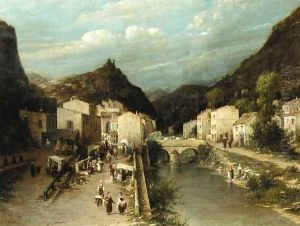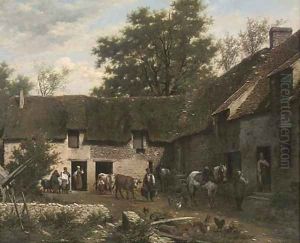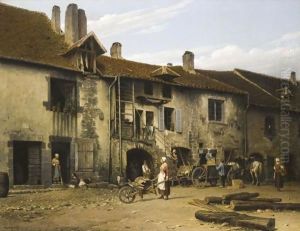Leon Legat Paintings
Leon Legat was a pivotal figure in the world of ballet, born in 1848 in what was then the Russian Empire, now part of modern-day Latvia. His life spanned an era of significant transition in the arts, witnessing the fading of old-world imperial grandeur and the rise of modern artistic movements. Although primarily known for his contributions to ballet as a dancer, choreographer, and teacher, Legat's influence extended beyond the stage, playing a critical role in the preservation and transmission of classical ballet traditions into the 20th century.
In his early years, Legat trained at the Imperial Ballet School in Saint Petersburg, a prestigious institution that has nurtured many of ballet's greatest talents. His rigorous training and innate artistry soon led him to prominent roles within the Imperial Russian Ballet. Alongside his brother, Sergei Legat, he became one of the era's most celebrated dancers, known for his technical prowess and expressive performances. The Legat brothers were integral to the ballets of Marius Petipa, creating roles that remain staples of the ballet repertoire today.
Beyond his performances, Leon Legat's most enduring legacy lies in his dedication to teaching. Following his retirement from the stage, he devoted himself to the education of the next generation of dancers. His pedagogical approach emphasized not only the technical aspects of ballet but also the emotional and expressive qualities that bring performances to life. Many of his students went on to achieve international fame, ensuring that his teachings and artistic philosophy would resonate well beyond his own lifetime.
Leon Legat's death in 1929 marked the end of an era, but his contributions to ballet have endured. Through his students and the rich tradition of the Vaganova method to which he contributed, his influence continues to shape ballet. His commitment to the art form, both on and off the stage, secures his place among the legendary figures of ballet history.





